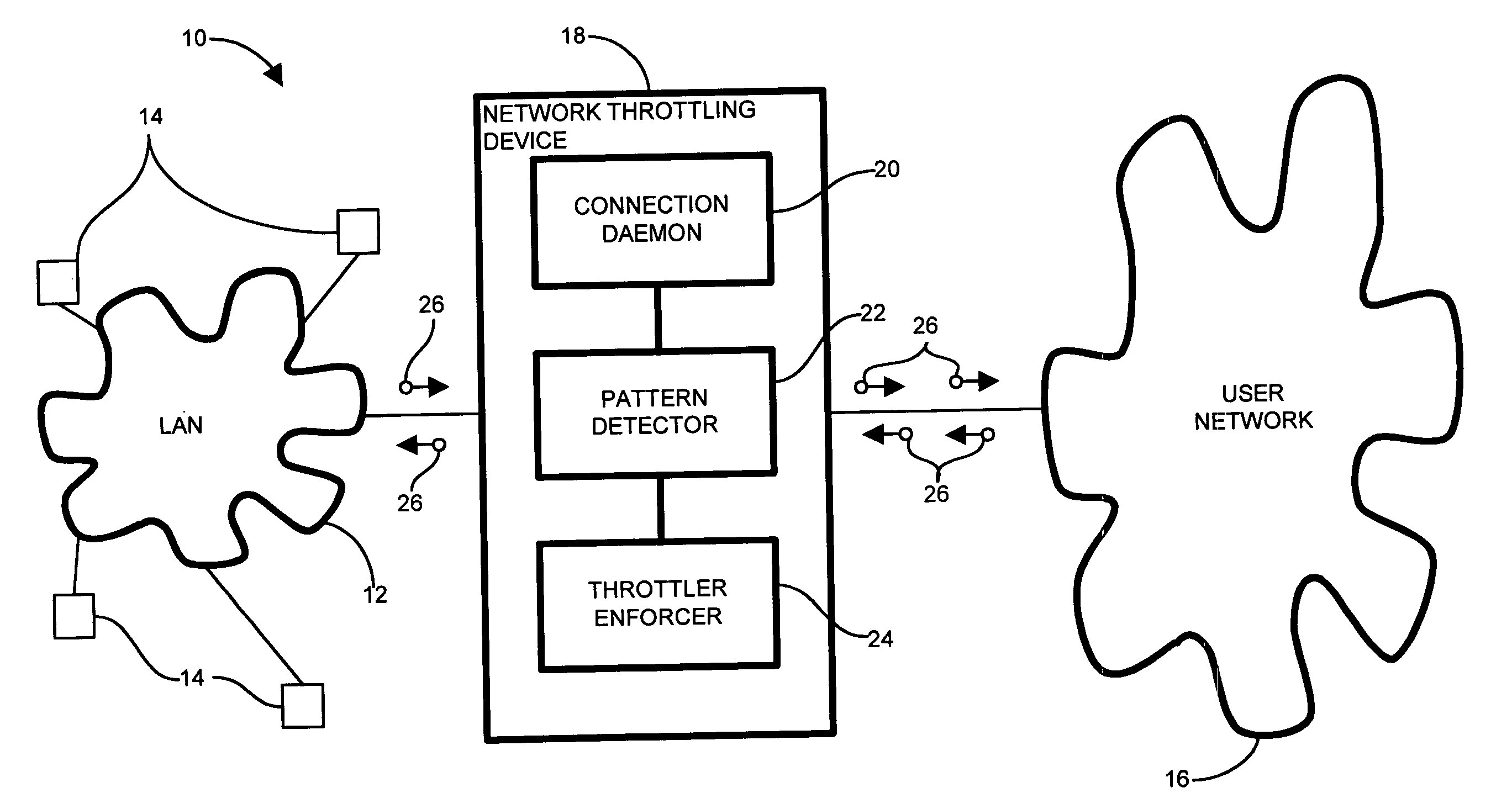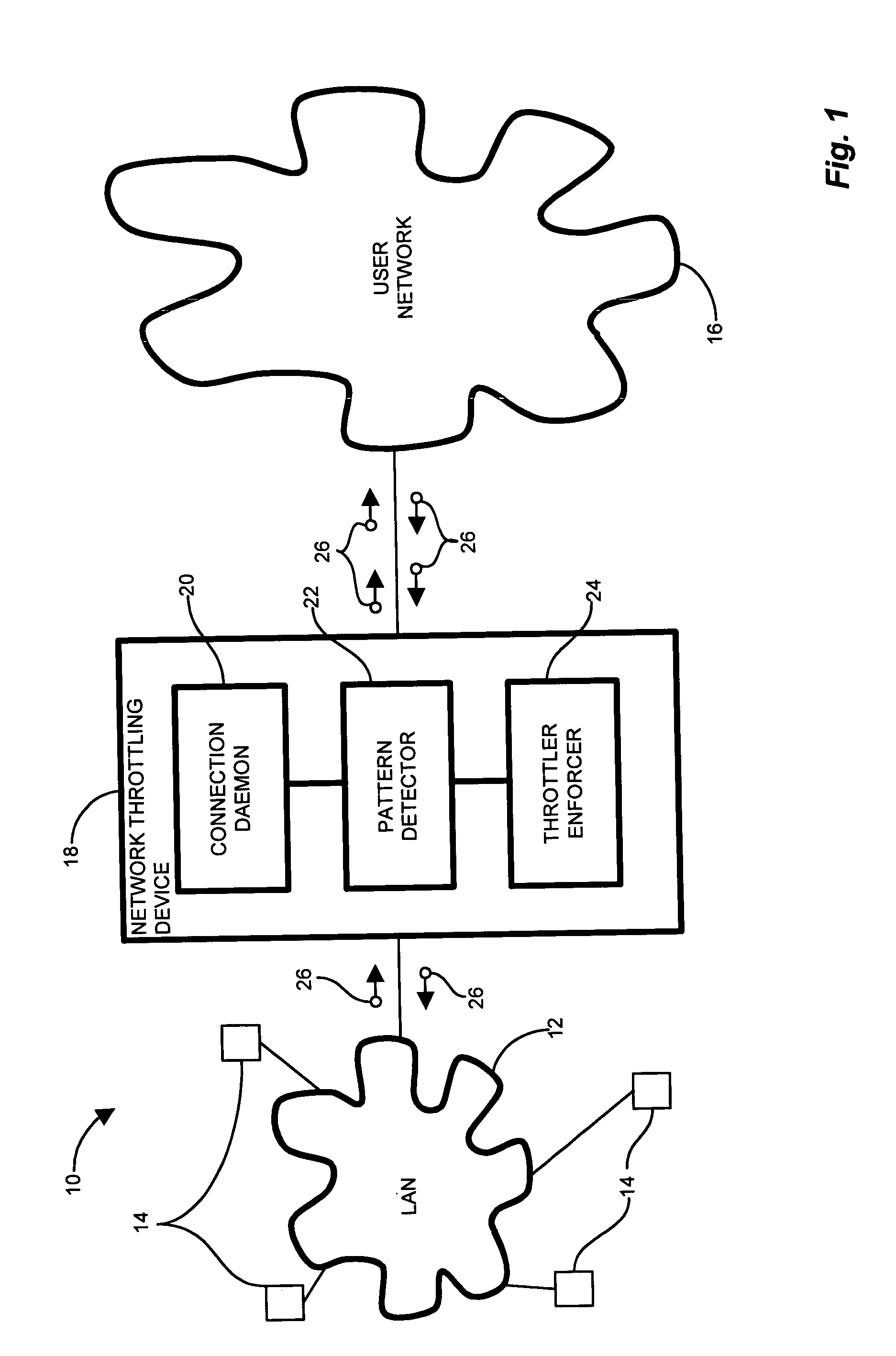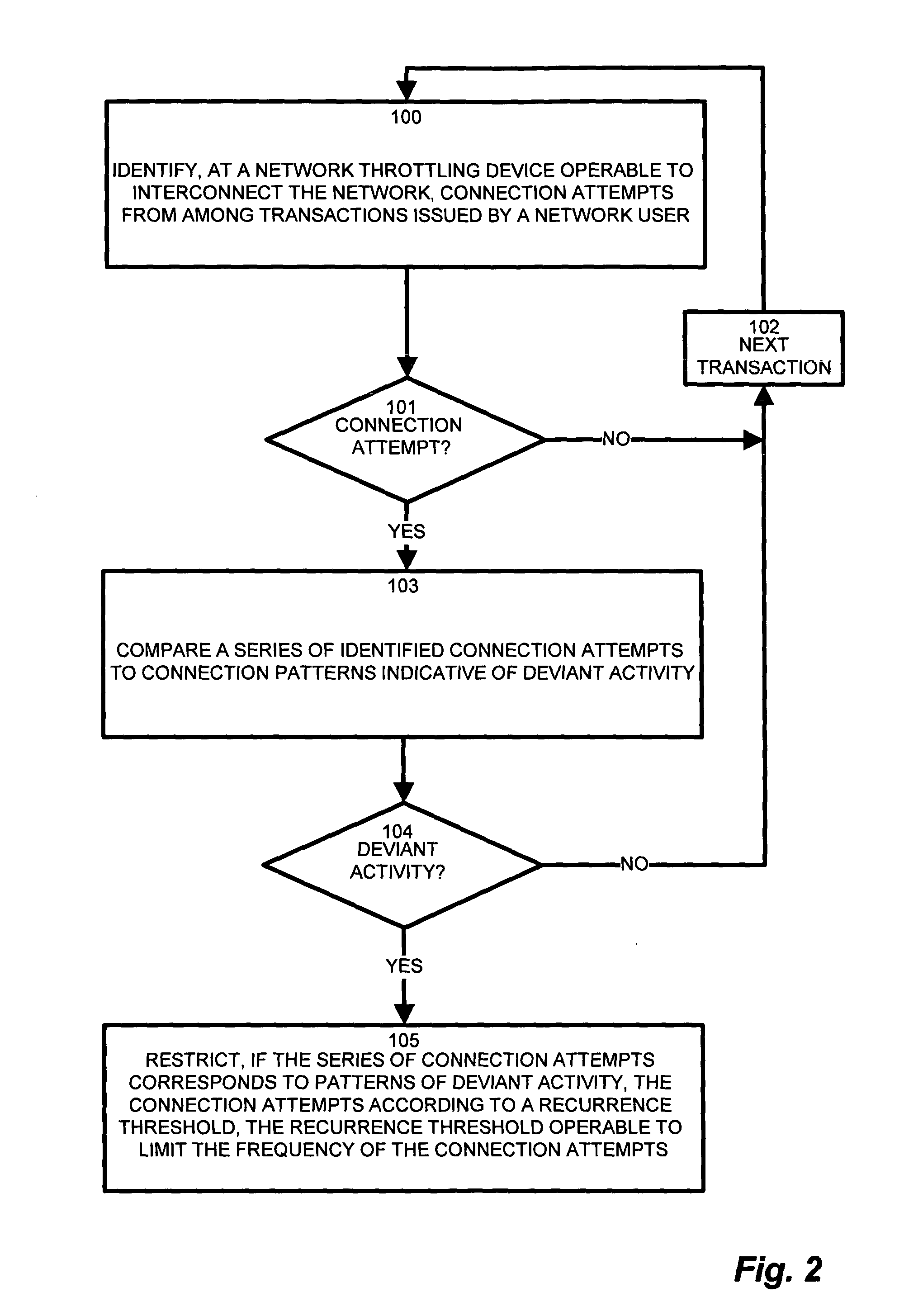Network connection detection and throttling
a network connection and detection technology, applied in the direction of program control, unauthorized memory use protection, instruments, etc., can solve the problems of uninhibited access from thereon, port scanning is both generally bad and detectable, approach appears to assume substantial preparation and anticipation on the part of the user, and achieves the effect of reducing the negative effects of conservative analysis
- Summary
- Abstract
- Description
- Claims
- Application Information
AI Technical Summary
Benefits of technology
Problems solved by technology
Method used
Image
Examples
Embodiment Construction
[0033]In a conventional computer network system having a core network interconnecting a plurality of LANs functioning as edge networks, message traffic between the edge network and the core network passes through an edge router serving the edge network. A malicious attack directed to the network as a whole (core network) could emanate from anywhere within the LANs. However, the edge router transports all message traffic between the edge network and the core network. Embodiments of the invention are based in part on the observation that it would be beneficial, therefore, to provide a network throttling device operable for port scanning protection in the edge router to identify and mitigate, or limit, harmful transmissions at the edge network such that they do not propagate to the core network, and which also does not hinder legitimate transmissions between the edge network (subnetwork) and the core network, including the Internet.
[0034]Embodiments of the invention substantially overc...
PUM
 Login to View More
Login to View More Abstract
Description
Claims
Application Information
 Login to View More
Login to View More - R&D
- Intellectual Property
- Life Sciences
- Materials
- Tech Scout
- Unparalleled Data Quality
- Higher Quality Content
- 60% Fewer Hallucinations
Browse by: Latest US Patents, China's latest patents, Technical Efficacy Thesaurus, Application Domain, Technology Topic, Popular Technical Reports.
© 2025 PatSnap. All rights reserved.Legal|Privacy policy|Modern Slavery Act Transparency Statement|Sitemap|About US| Contact US: help@patsnap.com



